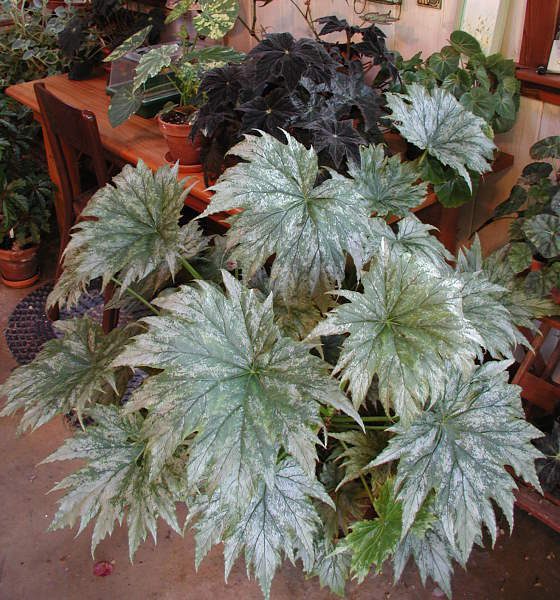Rudy Ziesenhenne of Santa Barbara created this begonia in 1975. Before Rudy named it, a customer to his greenhouse spotted it and named it for him. B. ‘Rudy’ is classified horticulturally as thick-stemmed, non-ramified. The plant is a result of the cross B. luwigiid x B. ‘Popennoei’ and is reported to have semi-double pink flowers in the winter. Further identifying characteristics are the trunk-like, stout stems and short internode intervals. As with most thick-stemmed types, foliage appears only at the top of stems making the plant resemble a small tree. Occasionally, new basal growth appears which makes the plant look fuller. But it seldom, if ever, branches, even if pinched. Two things can happen when the growth tip is pinched or a tip cutting is taken: a new terminal shoot will appear and its upright growth will continue, or the stem might rot to the surface. B. ‘Rudy’ likes to be somewhat pot-bound and thus needs a steady diet of fertilizer. It does tend to go dormant in winter. If the plant is repotted during spring/summer it can be placed a half-inch or so lower in the new mix. This helps spur new basal growth.
This plant is not a rapid grower. I have been told it starts from leaves, but I have not, to date, been successful doing this. The Thompsons classify this plant as a Begonia for the beginner, but my experience has been that it requires fairly specialized care like one of its parents, B. ludwigii, which I consider a ‘touchy’ plant. Like B. ludwigii, B. ‘Rudy’ does not like to be kept wet.
As to pests, this hybrid is one of those plants that can be considered a mealy bug’s best friend. I nearly lost a plant once to a particularly virulent infestation. If you do not like using systemics, a fifty percent solution of rubbing alcohol and water sprayed directly on visible mealy bugs controls the problem. As fall approaches, mildew can appear, so a preventative spraying with a systemic fungicide will keep it in good condition. There is a similar hybrid using B. ludwigii done in 1938 called B. ‘Silvador.’ But if you compare B.’Silvador’ to B. ‘Rudy’ and B. ludwigii, it looks more like B. ‘Rudy.’


